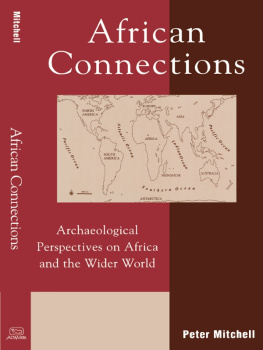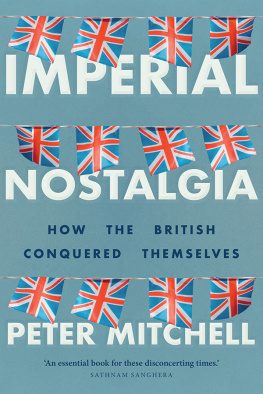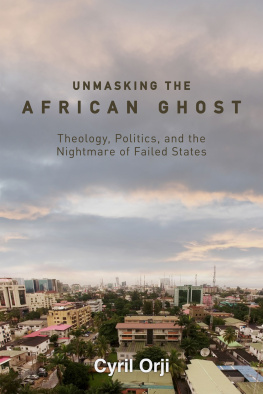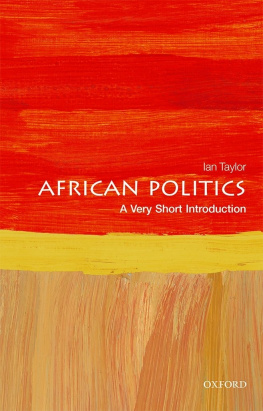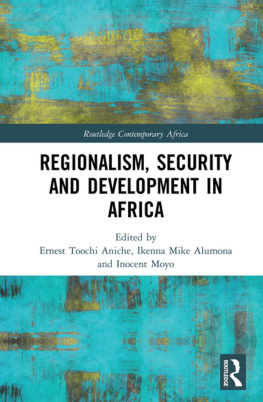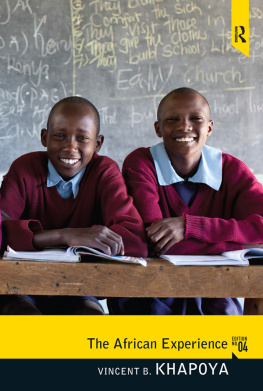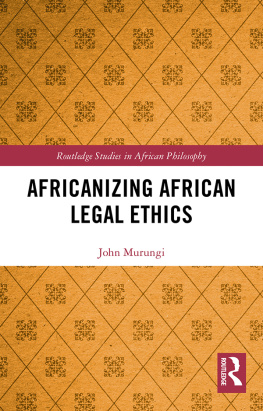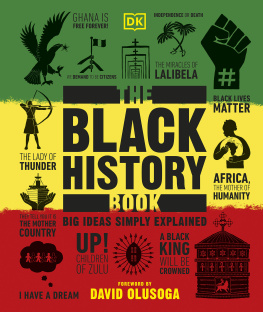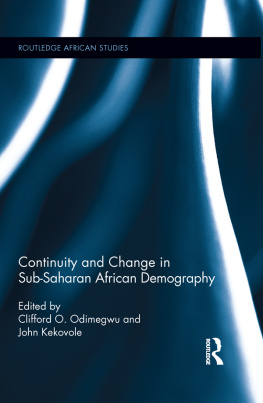Acknowledgments
A NY BOOK, and particularly perhaps one with a scope as large as this one, reflects the input of many people. For the initial suggestion and their continuous encouragement, including comments on the text, I should like to thank Joe Vogel and Mitch Allen, the staff of AltaMira Press who helped see it through to publication, especially Monica Riley and Terry Fischer, and Sam Challis, who produced all the maps.
Many colleagues took the trouble to comment on draft chapters or, in some cases, earlier versions of some of the arguments presented here. I may not always have taken their advice, but I am nonetheless grateful for their suggestions and corrections of fact. For their assistance here I should like to thank Larry Barham, Nick Barton, Yvonne Brink, Jeremy Coote, Matt Davies, Vivian Davies, Anne Haour, Tom Huffman, Tim Insoll, Ken Kelly, Kevin MacDonald, John Mack, Susan McIntosh, David Phillipson, Innocent Pikirayi, Andrew Reid, Garth Sampson, Ann Stahl, Marijke van der Veen, Gavin Whitelaw, and Andrew Wilson. Several of these individuals also helped by contributing illustrations, and I have acknowledged them and other colleagues who were kind enough to assist in this way in the text.
This book also draws onand, I hope, benefits fromcontacts with many other Africanists over the years. David Phillipson first interested me in African archaeology as an undergraduate and has been of immense support to me and other British-based Africanists. Teaching with him in the Cambridge of 198283 were John Alexander, Graham Connah, and Francis van Noten, all of whom opened my eyes to other parts of the continent. That process continued in Oxford under the supervision of Ray Inskeep, who encouraged me to take on this project and provided important insights in its initial stages; it is a great sadness that he died before its completion. Through him my own fieldwork and research have concentrated in southern Africa and I am grateful to all my colleagues there, but especially to John Parkington and the other members of the Department of Archaeology at the University of Cape Town and to David Lewis-Williams, Karim Sadr, Ben Smith, and Lyn Wadley at the University of the Witwatersrand. John Sutton kindly hosted a visit several years ago to Kenya and Tanzania, while George Abungu helped organize a trip to the Lamu Archipelago. Ken Kelly deserves thanks for allowing me to participate in his excavations at Savi, thereby introducing me to West African archaeology. Pierre de Maret and other contributors to the International Certificate in African Archaeology, as well as the organizers of and participants in successive conferences on African archaeology in Los Angeles, Poznn, Cambridge, and Bamako, expanded my horizons further, with Steven and Melanie Brandt and Susan McIntosh facilitating a truly enjoyable visit to sites in Mali. Proving the worth of conferences still further, the 1992 SAfA meeting at Los Angeles also introduced me to Kit Wesler, a colleague with a great facility for the kind of wide-ranging, intercontinental comparative study of which African archaeology still stands in need if its voice is to be heard beyond the confines of the Africanist community itself. Working in Oxford I have also been fortunate to benefit from teaching in an environment where able students are not in short supply: Sam Challis, Luiz Costa, Matt Davies, Will Ellerby, Marcus Starling, and Chris Wingfield in particular helped me change my mind on many things, while Anne Haour, John Hobart, Fumiko Ohinata, and Brian Stewart helped doctoral supervision to get off to a flying and very pleasurable start. Finally, I should like to thank all those other colleagues who are now working in African archaeology from within the United Kingdom; the growth in our numbers and the collegiality displayed at recent meetings augur well for the future of the subject.
This is the second book I have written since my daughter was born. To Chiara, Gloria who made her and so many other things possible, andfor reasons best known to ourselvesCesare, many thanks for your support, comment, and distraction.
About the Author
PETER MITCHELL first encountered African archaeology as an undergraduate in Cambridge in 1982-83. From there he moved to Oxford, completing a doctorate on the Pleistocene Later Stone Age of southern Africa in 1987. Tenure of a British Academy Post-doctoral Research Fellowship supported a major program of fieldwork in western Lesotho, which was extended to the Lesotho highlands when he held a second post-doctoral research fellowship at the University of Cape Town. Both projects focused on the archaeology of Middle and Later Stone Age hunter-gatherers and on obtaining data relevant to the reconstruction of late Quaternary paleoenvironments. After having taught at the University of Cape Town in 1990 and at the University of Wales, Lampeter, from 1993 to 1995, he returned to Oxford in 1995. There he combines the position of University Lecturer in African Prehistory with a Tutorial Fellowship in Archaeology at St Hughs College and the post of Curator of African Archaeology at the Pitt Rivers Museum. He continues to investigate the Later Stone Age archaeology of Lesotho and is also actively researching the history of southern African archaeology. Recent publications include The Archaeology of Southern Africa (2002) and a volume coedited with two former research students, Anne Haour and John Hobart, Researching Africas Past: Contributions from British Archaeologists (2003), along with numerous journal articles and chapters in edited books. He serves on the Governing Council of the British Institute in Eastern Africa and is a member of the editorial boards of African Archaeological Review, Antiquity, Before Farming , the Journal of African History, the South African Archaeological Bulletin , Southern African Humanities , and World Archaeology . From 20042006 he is also President of the Society of Africanist Archaeologists.
References
Abdu, B., and R. Gordon. 2004. Iron artifacts from the land of Kush. Journal of Archaeological Science 31:97998.
Abir, M. 1965. Salt, trade and politics in Ethiopia in the Zamara Mesafint. Journal of Ethiopian Studies 4:110.
Abrahams-Willis, G. 1998. Archaeology and local cuisine: signatures of the Cape around 1750. Annals of the South African Cultural History Museum 10:166.
. 2000. Slave Lodge to become a major tourism magnet: preliminary report on year 2000 excavations. Quarterly Bulletin of the National Library of South Africa 54(4):13443.
Abu-Lughod, J. 1989. Before European Hegemony: The World System A.D. 1250 1350. New York: Oxford University Press.
Abulafia, D., ed. 2003. The Mediterranean in History . London: Thames and Hudson.
Adams, B., and R. F. Friedman. 1992. Imports and influences in the Predynastic and Protodynastic settlement and funerary assemblages at Hierakonpolis. In The Nile Delta in Transition: 4th 3rd Millennium B.C., E. C. M. van den Brink, ed. (31738). Tel Aviv: Israel Exploration Society.
Adams, W. M., A. S. Goudie, and A. R. Orme. 1996. The Physical Geography of Africa . Oxford: Oxford University Press.
Adams, W. Y. 1977. Nubia, Corridor to Africa . London: Allen Lane.
Adelaar, K. A. 1989. Malay influence on Malagasy: linguistic and culture-historical implications. Oceanic Linguistics 28:1-46.
Afolayan, F. 1998. Zanj slave revolts (c. 689-883). In The Historical Encyclopedia of World Slavery , J. P. Rodriguez, ed. (713). Santa Barbara: ABC Clio.
African Burial Ground. 2004. http://www.africanburialground.com (accessed 8 September 2004).

